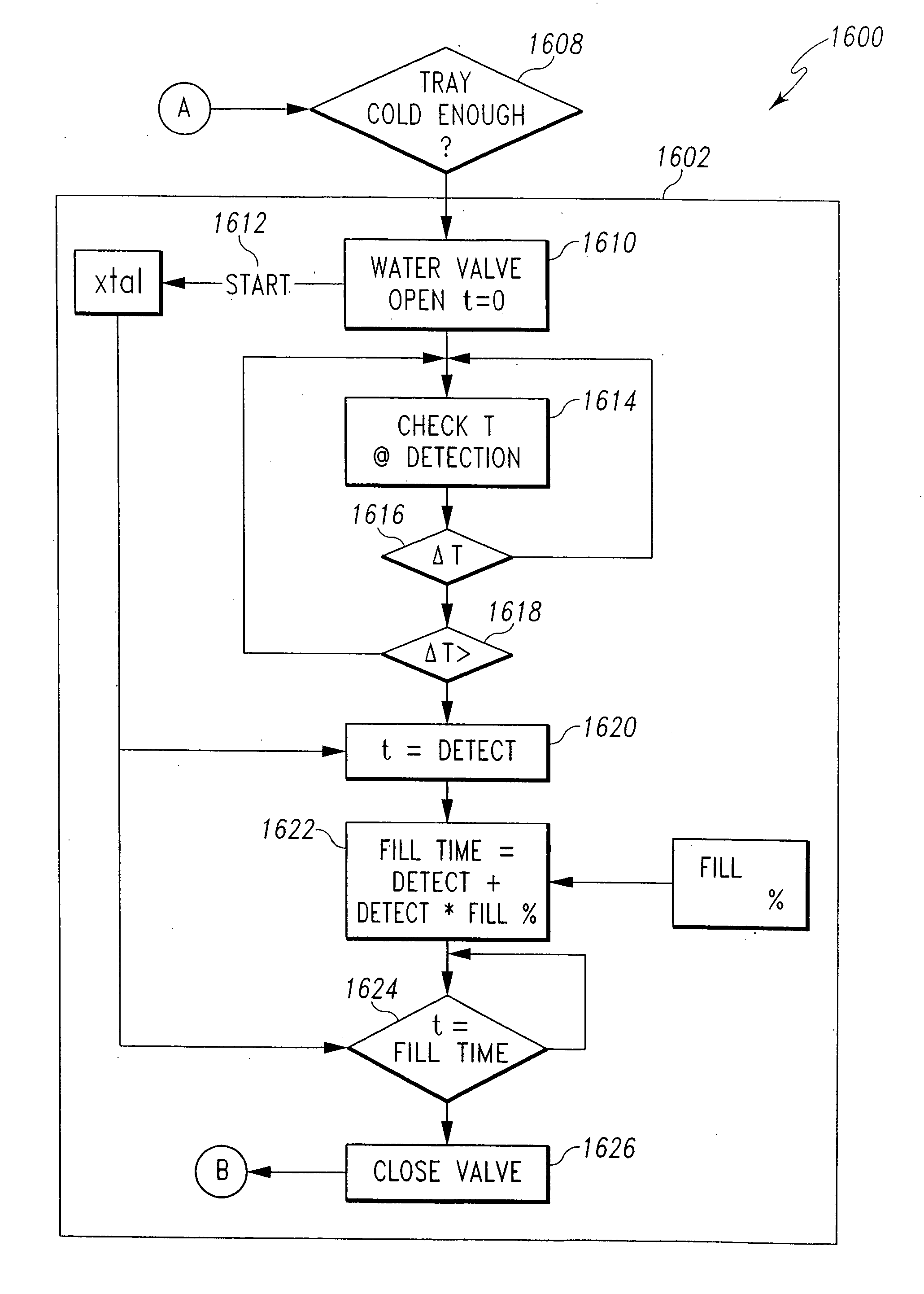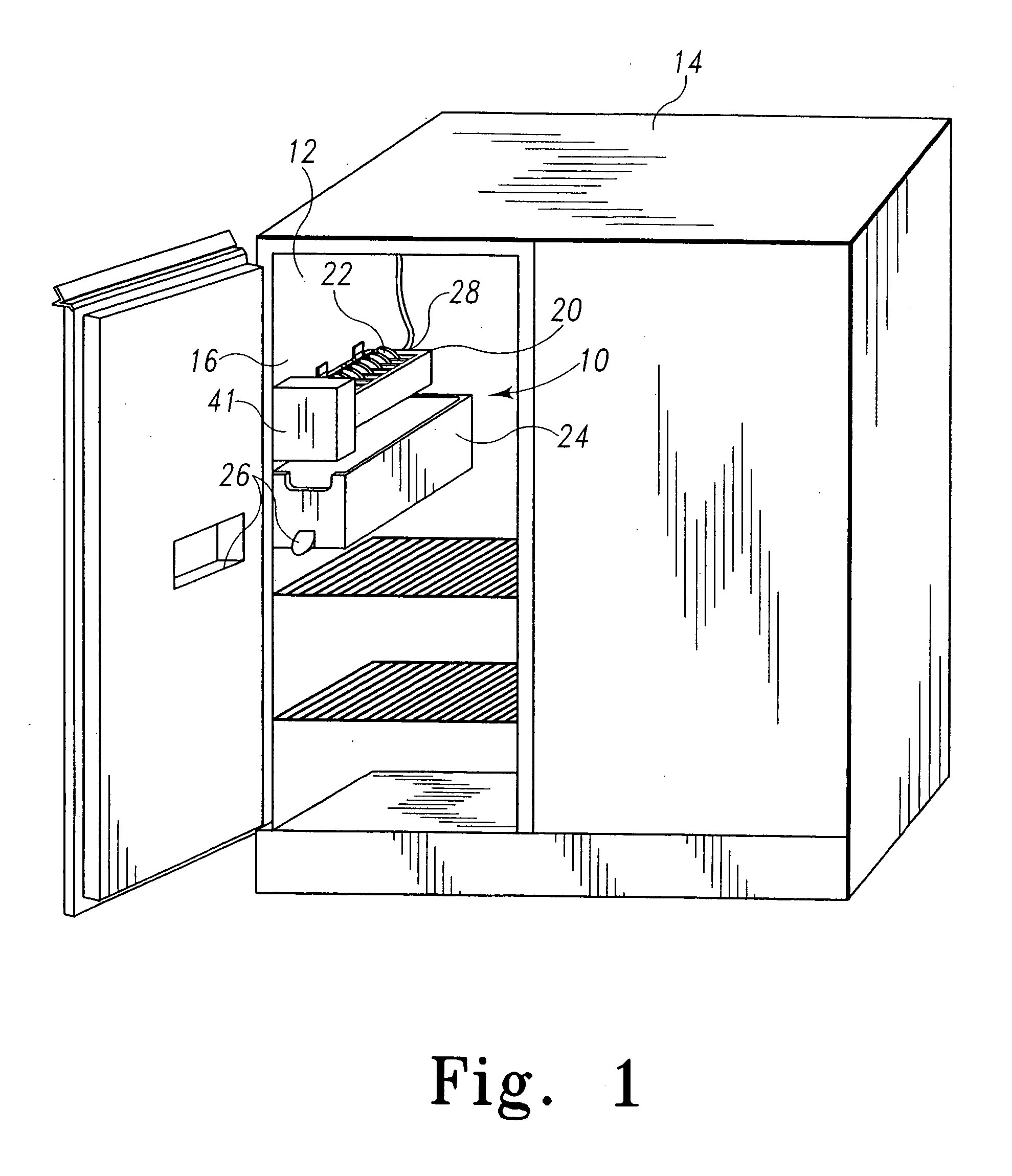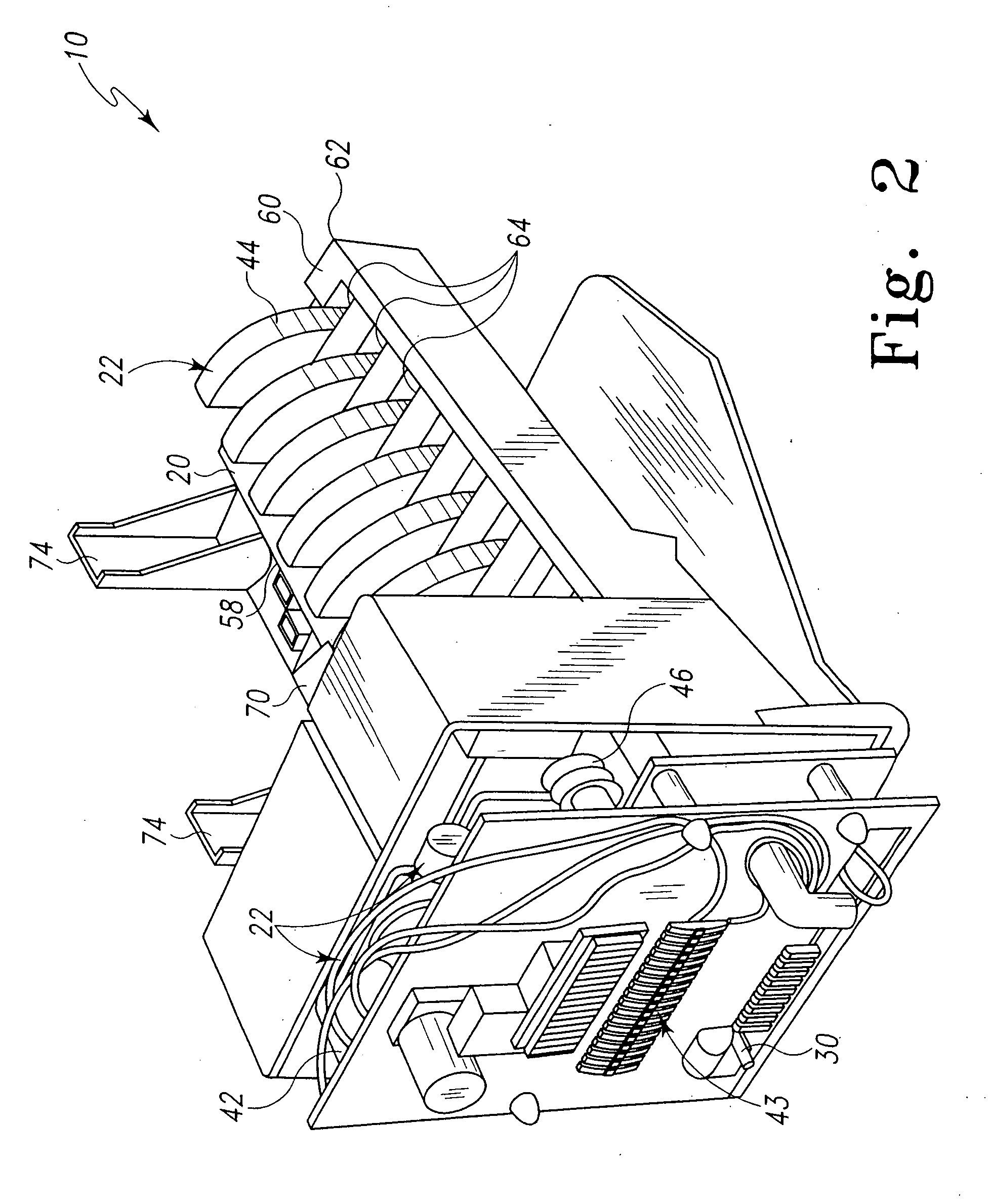Ice maker with adaptive fill
- Summary
- Abstract
- Description
- Claims
- Application Information
AI Technical Summary
Benefits of technology
Problems solved by technology
Method used
Image
Examples
first embodiment
[0065] Initially, in the disclosure (as described more fully below), the fill time is based on the required time to fill the ice tray 20 to a particular location at which a known portion of the entire volume of the tray 20 has been filled and continued for a time proportional to the remaining volume of the tray 20 and the time required to fill to the particular location. In an alternative embodiment of the disclosure, the level of the water in the last compartment 66f to be filled may be sensed. In yet another embodiment of the disclosure, the water filling operation is based on a set time that is calibrated to estimate proper filling of all of the compartments 66 of the tray 20. In each of the embodiments, the total time that the water solenoid valve 32 is open is adjusted in either the current or subsequent filling cycles based on a determination of a fill level error.
[0066] Cessation of the filling operation may be accomplished in various ways, however, the illustrated icemaker a...
second embodiment
[0107] In the disclosed second embodiment of adaptively filling an ice tray 2200, the level to which the ice tray 20 has been filled is detected by displacing water with the ejector members 52 until the water rises to a level where it is detected by an overfill sensor 117 in the overflow trough 114, as shown for example, in FIGS. 22 and 23. In the illustrated embodiment, the overflow trough 114 is formed in the first end wall 76 of the front compartment 66f of the ice tray 20. Water flows into the overflow trough 114 when each compartment 66 is filled to the desired level and the ejector members 52 are in a desired position to displace water in the compartments 66. The overflow sensor 117 may be a conductor pin insulated from the tray 20 and positioned to sense presence of water in the overflow trough 114.
[0108] In the second embodiment of the disclosed ice maker assembly 10 the stepper motor 42 is utilized to precisely fill the compartments 66 of the ice tray 20. Because a stepper ...
PUM
 Login to View More
Login to View More Abstract
Description
Claims
Application Information
 Login to View More
Login to View More - R&D
- Intellectual Property
- Life Sciences
- Materials
- Tech Scout
- Unparalleled Data Quality
- Higher Quality Content
- 60% Fewer Hallucinations
Browse by: Latest US Patents, China's latest patents, Technical Efficacy Thesaurus, Application Domain, Technology Topic, Popular Technical Reports.
© 2025 PatSnap. All rights reserved.Legal|Privacy policy|Modern Slavery Act Transparency Statement|Sitemap|About US| Contact US: help@patsnap.com



